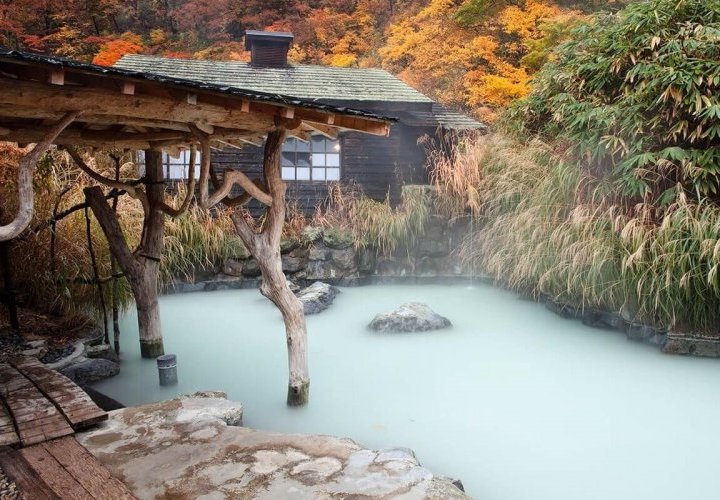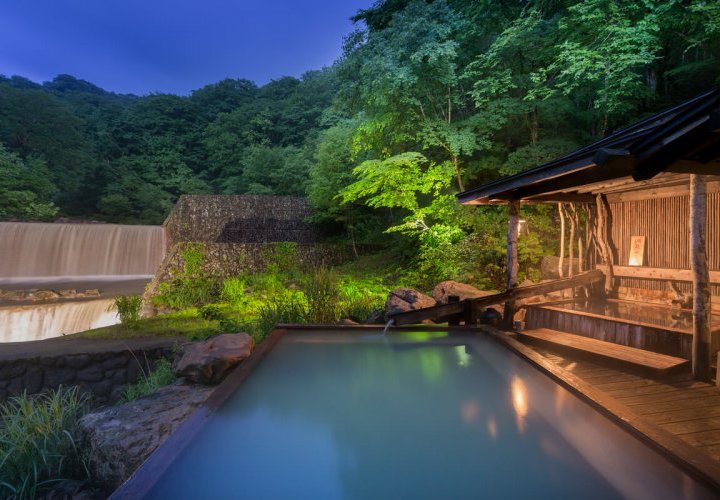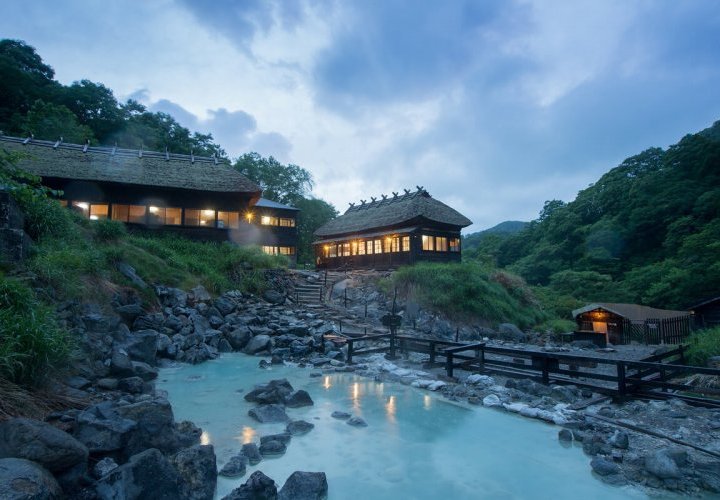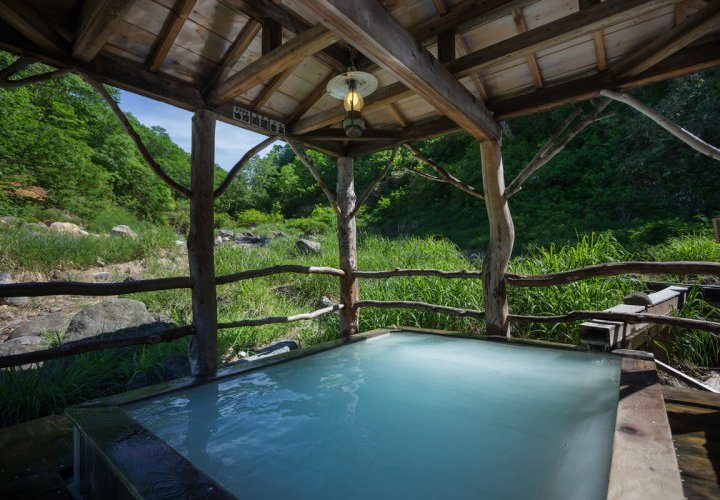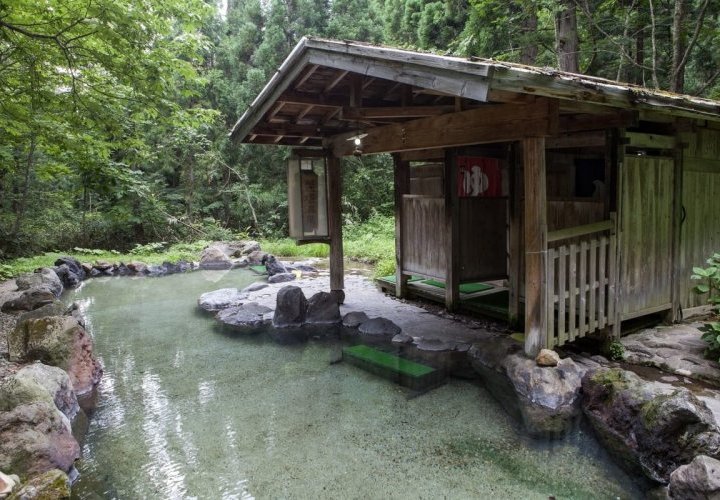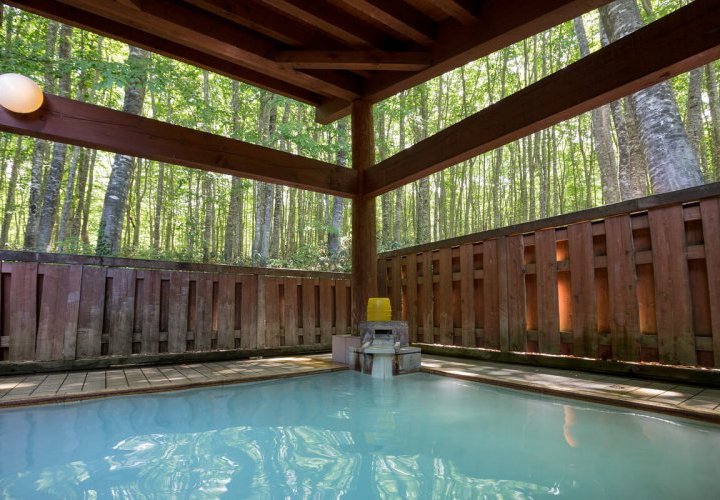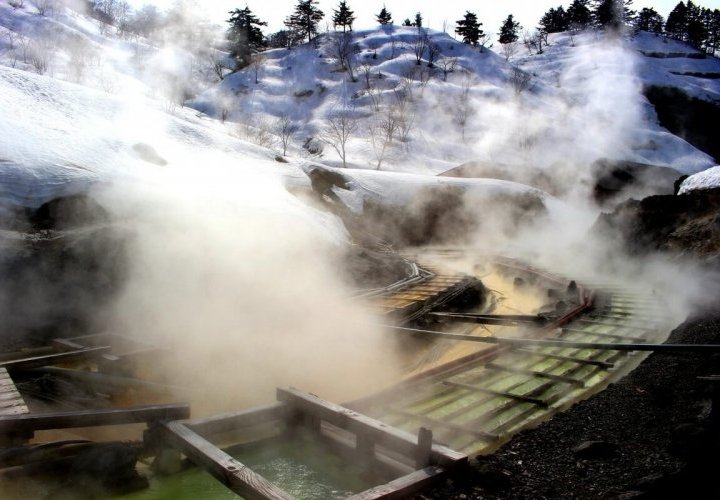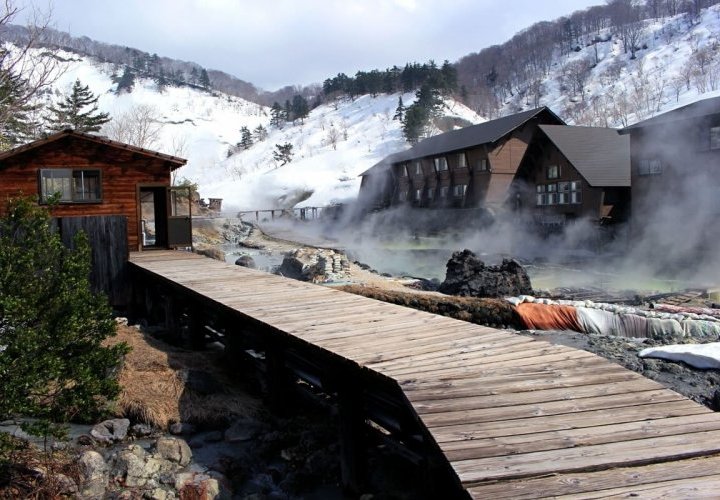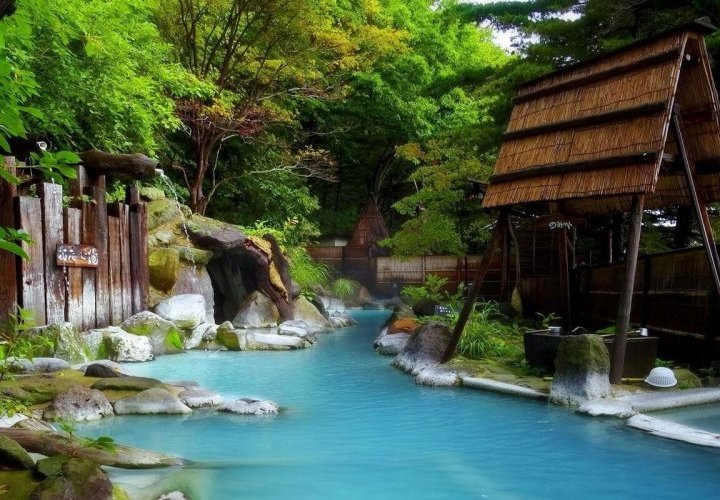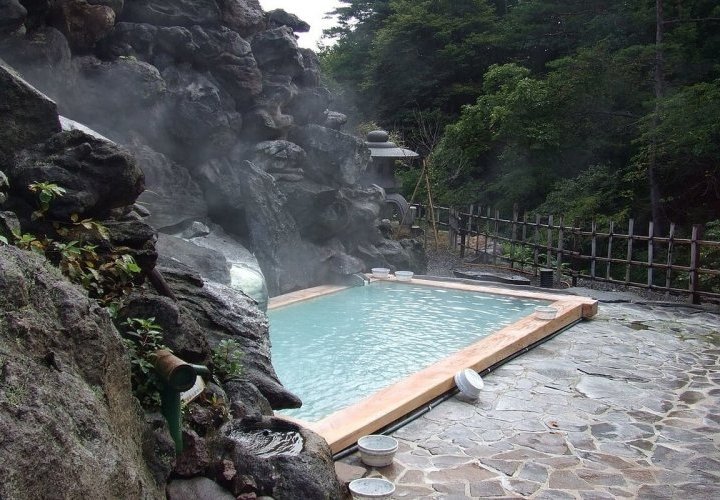Nyuto Onsen named after the nearby suggestively shaped Mount Nyuto, is a popular hidden hot spring area including a collection of hot springs in the remote mountains of Akita Prefecture above Lake Tazawa. In this area, you will be able to experience the different charms of the various inns and their spring water properties. Each of them has its own feature and its own source of water: Tsuru-no-Yu (known for its opaque water and thatched-roof terraced houses), Tae-no-Yu (has a modern Japanese interior and open-air baths along the mountain stream), Kuroyu Onsen (offers guests waterfall showers and classic gazebo-style open-air baths with log pillars), Ganiba Onsen (features seasonal views from its open-air bath surrounded by primeval forests), Magoroku Onsen (popular for the therapeutic benefits of its four different sources of spring waters), more
Ookama Onsen (offers a nostalgic wooden architecture of a reconstructed school building), Kyukamura (is known for its modern facilities and an open-air bath surrounded by beech forest). While here, you can experience the healing properties of the spring waters that are said to be beneficial for all kinds of ailments. For Onsen hopping a shuttle bus service is available between the inns.
Tamagawa Onsen is a unique hot spring resort in the mountains of Towada-Hachimantai National Park, known for having the most acidic hot spring water in Japan at a pH 1.2. It is located in the city of Semboku in a volcanically active valley with the most productive hot spring source in Japan that splashes out almost 9,000 litres of 98-degree hot water per minute. The valley also has a very rare radioactive stone (hokutolite) with a wide range of health benefits. Due to these water and stone properties, Tamagawa Onsen is visited by people from all over Japan as a hot spring for recovery and healing.
The bathing facilities of Tamagawa Onsen consist of gender separated wooden indoor baths with multiple pools that are either directly fed from the source, or have water that was watered down to 50% to reduce the acidity. more
The bathing facilities of Tamagawa Onsen consist of gender separated wooden indoor baths with multiple pools that are either directly fed from the source, or have water that was watered down to 50% to reduce the acidity. more
You can also relax and enjoy the indoor bedrock bathing where you can experience heat therapy during which your body is warmed by the geothermal heat given off the rocks. It is believed that the small amounts of radiation and large amounts of negative ions given off the rocks stimulate the metabolism and have a pain relieving effect. Tamagawa Onsen’s ryokan has a large number of rooms, where guests can either stay overnight or use the bath on a day visit.
Takayu Onsen is a small hot spring resort town that sits atop a 750 m high mountain plateau and consists of about a dozen ryokan halfway up the slopes of Mount Azuma in Fukushima city.
The all-natural hot spring town features warm, highly acidic, sulphuric waters that are known for their healing effects. The hot spring water flows from ten different springs around the town and is rich in hydrogen sulphide, which results in a slightly milky colour. Takayu Onsen features 14 ryokans (traditional Japanese-style inns) offering a unique relaxing natural atmosphere. Many of them maintain the high quality of the water by channelling it directly into their baths that can be also enjoyed by non-staying guests during the day for a small fee. The most famous baths among them are at Tamagoyu ryokan, more
The all-natural hot spring town features warm, highly acidic, sulphuric waters that are known for their healing effects. The hot spring water flows from ten different springs around the town and is rich in hydrogen sulphide, which results in a slightly milky colour. Takayu Onsen features 14 ryokans (traditional Japanese-style inns) offering a unique relaxing natural atmosphere. Many of them maintain the high quality of the water by channelling it directly into their baths that can be also enjoyed by non-staying guests during the day for a small fee. The most famous baths among them are at Tamagoyu ryokan, more
a small wooden bathhouse with one pool per each gender. It features the rustic Japanese garden and is famous for its open-air milky hot spring baths dotted in the garden, flowing directly from the source.
Ginzan Onsen (lit. "Silver Mountain Hot Spring") is one of the prettiest onsen towns in Japan nestled in the mountains of Yamagata Prefecture that has historic ryokan lined up along the river. The town originally developed around a silver mine in 1400s in the mountains near Obanazawa city. The mine eventually stopped, and hotels began to appear around the town.
The traditionally styled ryokan display beautiful three and four story wooden buildings and many of them have their own private onsen baths. The most popular public onsen to enjoy the traditional hot-water baths are Shiroganeyu, Kajikayu, and Omokageyu, which can be entered for a small fee. The visitors, who might be embarrassed by being naked in front of others, can enjoy the footbaths around town (called ashi-yu) that are free of charge. more
The traditionally styled ryokan display beautiful three and four story wooden buildings and many of them have their own private onsen baths. The most popular public onsen to enjoy the traditional hot-water baths are Shiroganeyu, Kajikayu, and Omokageyu, which can be entered for a small fee. The visitors, who might be embarrassed by being naked in front of others, can enjoy the footbaths around town (called ashi-yu) that are free of charge. more
The visitors can also see the spectacular 22-m tall waterfall that rushes constantly at the back of the town and the silver mine only accessible for about twenty metres.

